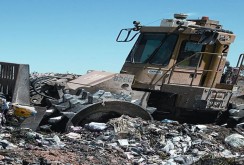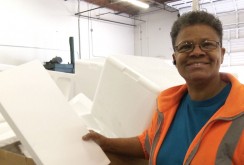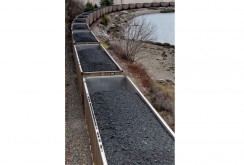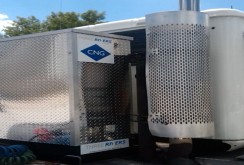
“It’s a smelly, dirty, public health nuisance.”
“It’s a valuable commodity to be traded.”
“It’s a fact of life that will never go away.”
All three of these disparate statements above can be made about garbage, and all three of them are true, especially the last statement. The definition of garbage — or “solid waste,” as it is referred to in the landfill business — changes depending on one’s perspective.
In the mid-20th century, dealing with solid waste was merely a cleanliness issue: You picked it up at the curb, you gathered it in a pile, and you buried it, burned it or dumped it into the ocean. Then, in the 1970s, environmental concerns began to be raised about air and water quality around town dumps.
Stricter regulations were set up to make sure landfills had multi-layered linings so that liquid waste couldn’t seep into the groundwater. Ocean dumping was banned nationwide. Instead of letting methane escape from the natural decomposition process, more regulations ensured that gas would be collected and odors would be controlled. Many communities shut down garbage incinerators to cut down on carbon dioxide and particulate emissions.
The greatest change, though, came about through the rise of recycling. Pulling valuable metal materials out of trash had been a centuries-old profession known as the “scrap business,” which reached its peak in the World War II years, when raw materials were scarce. But after the first Earth Day was celebrated in 1970, average Americans became far more aware of how much waste they were producing, leading to the first municipal curbside recycling programs that are so familiar today.
Here’s a quick look at how our relationship with solid waste has evolved over the years and some of the latest methods we’re developing to reduce, reuse and recycle our waste.
Solid Waste:
By the Numbers
Here are a few sobering national statistics from the U.S. EPA about what we recycle and how much we throw away:
28 billion: Number of bottles and jars thrown out every year.
251 million: Combined tonnage of solid waste produced annually.
570,000: Tons of compost created from food waste each year.
500: Minimum number of years Styrofoam cups and disposable diapers will last in modern landfills.
106: Pounds of food waste that are thrown out per person, per year.
95: Percentage of energy saved by recycling aluminum vs. mining it from bauxite ore.
34.5: Percentage of the American waste stream that is pulled out for recycling.
15: Years it takes for a tree to grow large enough to produce 700 grocery bags.
7: Gallons of oil used to make each of the estimated 800 million scrapped tires.
5: Percent of the waste stream produced by residential homes. The rest come from industry.
Source: U.S. Environmental Protection Agency
Flow Control:
A Trash Tug of War
Garbage is usually seen as an unpleasant fact of life that must be placed out of sight and out of mind. But to governments and businesses alike, solid waste is just another commodity — one that can make towns and companies quite wealthy if they corner the market.
For decades, there has been a raging debate, known as “flow control,” over the issue of who should be allowed to “own” solid waste as it is transported to landfills and recycling facilities.
To city and county governments, disposal of solid waste is one of the top public sanitation and health issues, so many of them view waste management as their ultimate responsibility. Therefore, some enact flow control ordinances stipulating that all solid waste generated within the municipality must go to their own transfer facilities, regardless of which private or public companies collect the refuse. In essence, flow control is a legal monopoly over solid waste, since governments can set their prices to dispose of the refuse in their own municipal landfills, known as a tipping fee.
However, private companies have objected to flow control on the grounds that solid waste is a valuable commodity. By forcing their collection vehicles to send waste to specific municipal landfills, these ordinances, private haulers argue, violate the rights of garbage firms under the Commerce Clause of the U.S. Constitution. These haulers, they say, should be able to send their “commodity” to any other legal facility with the lowest tipping fees, even if the landfills are out of state.
The U.S. Supreme Court has weighed in several times, siding with the private haulers in 1994 but later affirming that municipalities have a special duty to ensure that waste is managed properly via flow control, as long as bids for collection contracts are open and non-discriminatory. We surely have not seen the last of this ongoing trash talk. Stay tuned.
What’s in Our Garbage?
If you really want to make a dent in your own “carbon footprint,” find out new ways to reduce, reuse or recycle your paper, and compost your yard waste. Together, they make up about 58 percent of all waste the average American produces. Here’s a chart showing the basic breakdown:
Source: U.S. Environmental Protection Agency
What Is the Future of Garbage?
Here are a few technologies that are growing or will be on the horizon soon:
• Waste to energy – Burning garbage may be the oldest form of waste disposal. But technologies to capture the energy from combustion and prevent most pollutants and CO2 emissions from escaping are making waste-to-energy a relatively “green” option. Each year, more than 177 million tires are chipped and burned for their high BTU content.
• Trash to gas – In the early days of landfills, dumps truly were just dumps. Rain was allowed to mix with other refuse and seep to the bottom in a toxic stew called “leachate” that often made its way into the water table. Noxious fumes from rotting garbage were allowed to vent directly into the air. But today, landfills are tightly controlled to prevent moisture from entering and methane and foul odors from escaping. It’s now common for many landfills to capture methane and use it to power their own equipment and nearby buildings. An increasing number of landfills are now compressing this gas into liquefied natural gas for use in truck fleets or refining it into biofuel.
• Landfill mining – The Container Recycling Institute estimates that, despite decades of awareness programs and regular recycling collections plans, an estimated $12 billion worth of aluminum cans were simply buried in landfills over a 20-year period. Eventually, waste companies say, technologies will be developed to go back into old garbage piles and “mine” them for various materials that would have survived, such as metals, plastics, glass and rubber.












